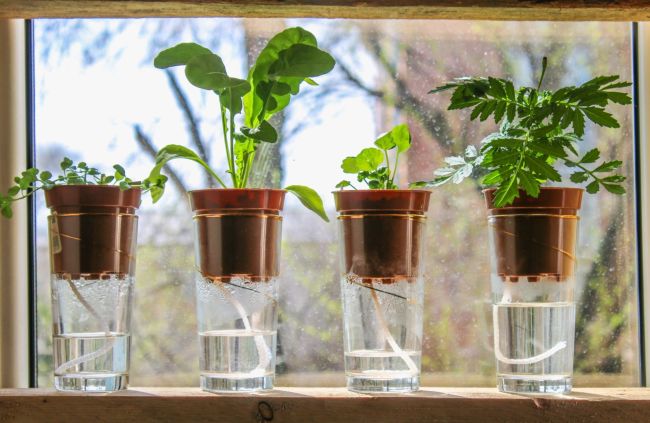When it comes to indoor plants, it can be a bit of a challenge to keep them happy and healthy. They need lots of light, water and nutrients all things that are difficult to provide when living in an apartment full of people who are busy going about their lives.
Thankfully, there are some clever ways out there that make watering easy enough for anyone. One such product is self-watering planters. These containers automatically water your plants without any human intervention.
How do they work?
Self-watering pots are containers that automatically administer water to your plant’s roots. They’re great because they allow you to leave town for a few days, or just forget about watering for a week, without worrying about your plants.
The idea behind self-watering pots is pretty simple: there’s a reservoir of water at the bottom of the container and an opening at the top under which sits another pot containing soil or whatever media you have chosen.
Water from this reservoir seeps into the top pot through its holes until it reaches capacity and trickles down into the bottom pot where it will sit until more water is needed by your plants’ roots.
In this article we’ll look at some of the most common problems you might encounter when using self-watering pots, and some ways to address them.
Problems With Self-Watering Pots
Self-watering pots are not ideal for all plants.
While self-watering pots are a convenient way to keep your plants healthy and happy, they’re not appropriate for all types of plants. Some plants need more water than others and some require less and this isn’t something you can determine by reading the plant’s description on the store shelf.
If you’re thinking about investing in a self-watering pot, it’s important to keep in mind what kind of care each plant needs before making your purchase. If you don’t have much experience with gardening, or if this is your first time using these kinds of containers, it’s best to start small with just one type of flower or vegetable at first. Over time as you gain experience with different types of flora and fauna and their respective watering requirements, then feel free to expand your collection as needed!
Irregular water supply
When you water your plants manually, you can ensure that the plant gets exactly what it needs. But with a self-watering pot, this isn’t always possible. Sometimes, the soil will become too dry and you’ll need to add more water. Other times, the plant will get too much water and you’ll need to drain some out. In either case, it’s difficult to determine how much water your houseplants need if they’re in self-watering pots.
The wick sometimes stops working.
The wick can stop working. The wick is the thing that draws water from the reservoir to the soil so it doesn’t dry out, but sometimes, it just stops working. It’s not uncommon for this to happen if you notice that your plant has started wilting and its leaves are turning brown, check the base of its pot and you’ll see the wick has gone dry. If this happens, it’s time to re-wet the soil by watering from below with a watering can or hose.
Self-watering pots are not cheap.
Not only are self-watering pots more expensive than regular pots, but they can be more expensive than other types of self-watering systems. The cost of the pot itself isn’t the only factor you should consider when it comes to determining whether or not a particular type of container is right for your plants.
For example, if you buy an appropriately sized and shaped plastic planter from one store and then decide that you’d prefer to use a ceramic garden pot that costs twice as much at another store you may not realize that there will be additional expenses associated with both types of containers.
They can drown your plant.
It’s important to remember that while self-watering pots are convenient, they can also be dangerous. If a plant is placed in too-deep of a self-watering pot, it can drown.
When should you use a self-watering pot?
Self-watering pots are great for busy gardeners. They require less monitoring than traditional containers, which means you spend less time worrying about your plants and more time enjoying them. This also makes them ideal for beginners , who may not have a lot of experience with gardening.
The design also makes it easier to grow plants in areas where water supplies are limited. Because you don’t have to manually refill the pot every few days, you can leave it sitting on your countertop or patio without worrying about neglecting it.
Do they really keep my plants watered and fresh?
Yes! They are a great alternative to traditional pots and can be used for any type of plant. They are especially useful for plants that need frequent watering or those that have a tendency to dry out quickly.
Conclusion
Self-watering pots are a great option for people who don’t have time to water their plants every day. They allow you to place your plant in any room and not worry about them drying out or dying because of lack of water.
Also Read: Tiny Silver Bugs In Houseplant Soil? Eliminate Them!
